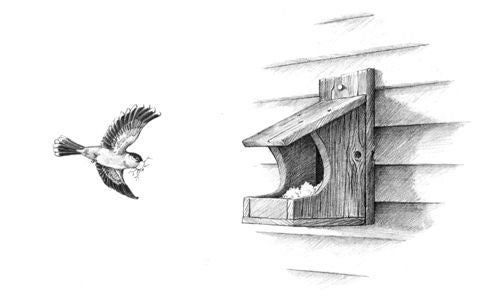
SCIENTIFIC NAME
Turdus migratorius
DESCRIPTION
The American robin is the largest thrush in North America. Males are not only more vocal than females, but also slightly larger and more brightly coloured. Adult American robins have grey-brown backs, characteristic reddish breasts, white bellies, white chins, yellow bills and throats with dark streaks. Juveniles have dark speckles on their backs and on their cinnamon-coloured breasts.
RANGE
Found throughout North America, the breeding or summer range of the American robin spreads across every province and territory of Canada. During the winter, most migrate as far south as southern Mexico and Guatemala. However if food is still available, some may stay to brave our cold Canadian winters.
HABITAT
DIET
The American robin’s diet is made up of approximately 40 per cent invertebrates and 60 per cent fruit. During the spring and summer, it eats invertebrates such as earthworms, caterpillars and beetles, and in the fall and winter switches to fruits such as viburnum, sumac, chokecherries and tomatoes. Young are fed invertebrates including grubs and earthworms.
BEHAVIOUR
undefinedPRIMARY ECOSYSTEM ROLES
While American robins can sometimes cause damage to crops, they are mostly beneficial in that they aid in seed dispersal and help control insects, such as caterpillars, weevils and beetles.
Photo Gallery

This content is from Hinterland Who's Who, a joint program between the Canadian Wildlife Federation and Environment and Climate Change Canada. For more species fact sheets, videos and sound clips, please visit hww.ca
- 0

